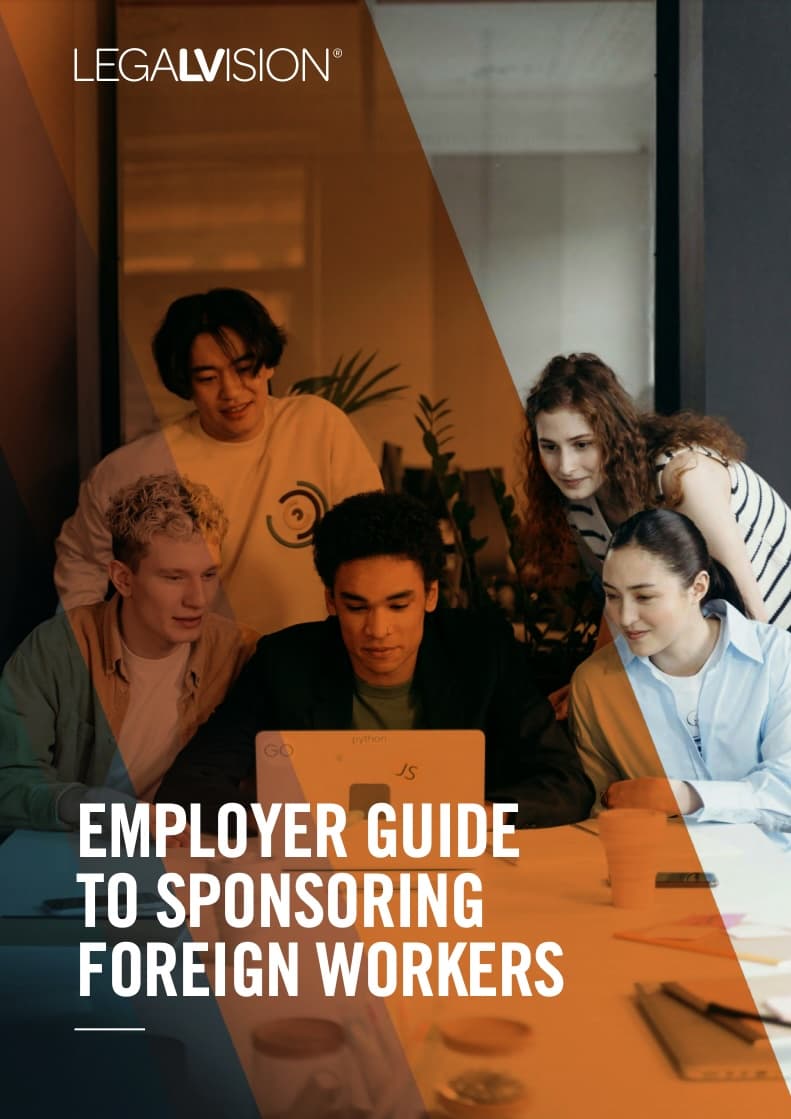If you are considering migrating to Australia, taking your business with you is a big step. When entering a new market, you may want to have your key employees with you as support. However, to bring your employees to Australia, you need to ensure that they obtain appropriate work visas. There are three types of visas that may be available to you and your employees. These are the:
- Skills In Demand (482) visa;
- Employer Nomination Scheme (186); and
- Skilled Employer Sponsored Regional (Provisional) visa (494).
This article will go through the basic requirements of each of these different pathways so that you can legally bring your employees to Australia.
Skills In Demand Visa
The SID visa is a temporary visa that permits the holder to live in Australia while working full-time for you in a nominated position. Visa applicants may also include dependent family members in their application.
The SID visa has two streams: the Core Skills stream and the Specialist Skills stream.
- Core Skills Stream: This stream is for applicants with occupations listed on the Core Skills Occupation List (CSOL).
- Specialist Skills Stream: This stream is for jobs that require specialised skills and is divided into different groups based on the type of work:
- Managers: Senior-level roles such as Chief Executives or managers in sectors like healthcare and engineering.
- Professionals: Jobs requiring advanced education and expertise, like doctors, engineers and IT specialists.
- Community and Personal Service Workers: Roles that focus on helping others, such as childcare workers or welfare support workers.
- Clerical and Administrative Workers: Specialised administrative roles, such as office managers or coordinators.
- Sales Workers: Positions involving specialised sales expertise, such as sales representatives in specific industries.
The SID pathway is a 3-stage process, as outlined below.
1. Business Sponsorship
Your first step as an employer is to apply to be an approved standard business sponsor (SBS). You can also apply as an overseas business sponsor (OBS) if you do not have a legally established entity in Australia.
There are a number of general requirements that you must meet to become an approved SBS. You will need to establish that your business is:
- legally and actively operating;
- of good financial standing; and
- complying with Australian laws (if OBS, the relevant laws in your country).
You can demonstrate the above by providing the following to the Department of Home Affairs:
- your Australian business number, Australian Securities and Investments Commission (ASIC) records and registered business name;
- details of your company structure, such as whether you are a trust, incorporated association or unincorporated association;
- business activity statements;
- financial records and business bank statements;
- employee records, payroll, employment contracts, workplace policies; and
- annual reports.
If successful, the sponsorship approval is valid for up to five years for SBS and OBS.
2. Nomination
The next step involves nominating a position within your business that needs to be filled and identifying the individual you wish to fill it. You need to:
- select an occupation under the skilled occupation list;
- conduct labour market testing unless exempt;
- nominate a position that is genuine;
- pay the Skilling Australians Fund (SAF) levy; and
- depending on the skills stream, pay applicants an income that meets specific requirements. For the Core Skills stream, the salary must align with the Minimum Income Threshold.
3. Visa Application
Finally, the employee that you are sponsoring must apply for a visa associated with the nominated occupation. There are a set of eligibility criteria that apply, including:
- having a minimum of one year full-time experience or equivalent within the last five years and it must be relevant to the nominated occupation;
- having relevant qualifications;
- for some occupations, a skills assessment depending on your nationality;
- English competency; and
- health and character requirements.

Sponsoring overseas workers as an Australian business is complicated. Let us simplify it for you with this free employer guide.
Employer Nomination Scheme (ENS) Visa
The ENS visa is a permanent residency visa under which you can nominate skilled overseas workers to work and live in Australia. Upon meeting certain conditions, visa holders can apply for this visa under the Temporary Residence Transition stream as a pathway to permanent residency. There are only two stages involved in obtaining the ENS visa;
- nomination application; and
- the visa application.
The criteria and process for nomination and visa application stages are less complicated than those for the SID visa. However, there are three different streams to the ENS for sponsored employees, as outlined below.
1. Temporary Residence Transition
If your employee has held a subclass 457 or a 482 (TSS or SID) visa in the nominated occupation for a minimum of two years, they are eligible to apply for the 186 TRT visa. They are not required to undergo a skills assessment.
2. Direct Entry Stream
To apply via the direct entry stream, your employee will need to obtain a positive skills assessment and demonstrate a minimum of three years of experience in the relevant occupation.
3. Agreement Stream
This stream will apply to your employees if you, as their nominating employer, have a labour agreement with the Australian Government. This agreement should outline this pathway’s eligibility criteria, including the required qualifications and skills.
Continue reading this article below the formKey Takeaways
If you are a business owner wanting to migrate to Australia, there are several ways that you can bring your employees with you. The visa options accessible to your employees depend on the occupations Australia needs, and the status and the needs of your business. Additionally, your employees must meet the eligibility criteria for their visa applications. The most common pathways to bringing employees to Australia are through the:
- Skills In Demand (482) visa;
- Employer Nomination Scheme (186); and
- Skilled Employer Sponsored Regional (Provisional) visa (494).
If you have any questions about bringing your employees to Australia, your experienced corporate immigration lawyers can assist as part of our LegalVision membership. For a low monthly fee, you will have unlimited access to lawyers to answer your questions and draft and review your documents. Call us today on 1300 544 755 or visit our membership page.
Frequently Asked Questions
The main types of visas for bringing employees to Australia are the Temporary Skill Shortage (482) visa, the Employer Nomination Scheme (186) visa, and the Skilled Employer Sponsored Regional (Provisional) visa (494).
To apply for the TSS visa, employers must sponsor their business, nominate a genuine position, pay the Skilling Australians Fund levy, and the employee must meet eligibility criteria, including relevant experience and qualifications.
We appreciate your feedback – your submission has been successfully received.











